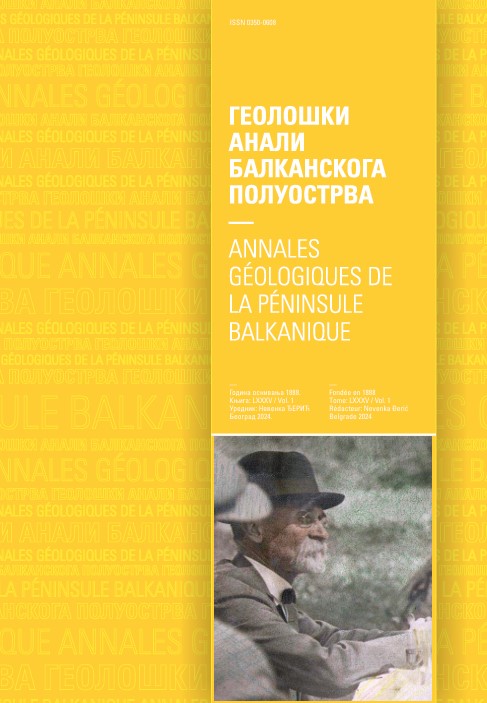Geological Structure Identification in Geothermal Manifestation of Lamongan Volcano Complex: A Magnetic Data Analysis Approach
Abstract
The Tiris area in the Lamongan Volcano Complex, Probolinggo, East Java, is estimated to be an area with geothermal potential in Indonesia. This is indicated by the existence of several hot springs along the Tancak River, forming a continuous line with a distance about 20–50 m between each hot spring. Segaran hot springs are one ofthe hydrothermal manifestations that can indicate the presence of geothermal potential in this location. Some previous research has shown the existence of subsurface geological structures around Segaran hot springs in a northwest-southeast direction. However, the identification of geothermal manifestations in this location is limited, so magnetic data can help identify subsurface geological structures to confirm the geothermal potential in this area. A significant contrast in horizontal magnetic anomalies indicates the existence of subsurface geological structures. To delineate the boundaries of the magnetic anomaly, the first horizontal derivative and second vertical derivative were applied. To determine the depth of the magnetic anomaly, located Euler deconvolution was used. The integration of these three transformations on the magnetic data is sufficient to interpret the position, direction, and depth of subsurface structures in the research area. The results show the position of dominant lineament in the Lamongan Volcano Complex through Segaran hot springs is a northwest-southeast orientation. These results align with the dominant orientation from the density lineaments analysis performed based on theDigital Elevation Model Nasional (DEMNAS). Building from previous research, the existence of fault structures correlated with Segaranhot springs can improve the indication of geothermal potential in the Lamongan Volcano Complex, especially in the Tiris area.
Copyright (c) 2024 Geološki anali Balkanskoga poluostrva

This work is licensed under a Creative Commons Attribution 4.0 International License.









